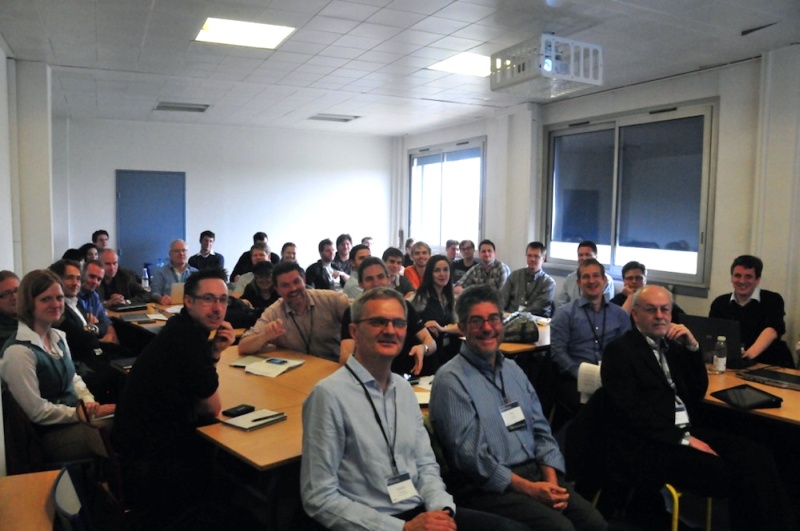Christian’s Workshop “Blended Interaction” at CHI 2013 in Paris (April 28, 2013)
In their pursuit of a “natural” or “intuitive” interaction, researchers and designers in Human-Computer Interaction have created a multitude of post-WIMP (post-“Windows Icons Menu Pointer”) user interfaces and interaction techniques during the recent years. Examples range from “perceptual computing” with depth cameras for gesture/body tracking and simultaneous pen & multi-touch interaction to tangible displays for augmented reality or entire rooms equipped with display walls and interactive tables.
The workshop “Blended Interaction – Envisioning Future Collaborative Interactive Spaces” at CHI 2013 in Paris on Apr 28 that was organized by Christian Jetter with colleagues from Konstanz, Dresden, Edinburgh, St. Andrews and Hagenberg (see http://hci.uni-konstanz.de/blendedinteraction2013/) established “Blended Interaction” as a novel concept for understanding what makes interactive technologies “natural” or “intuitive”. In brief, “Blended Interaction” combines the virtues of physical and digital artifacts, so that desired properties of each are preserved while integrating computing power in a considered manner. In a world of Blended Interaction, computing is woven into the fabric of our natural physical and social environment (e.g. our cities) without being too obtrusive or disruptive.
Keynote speakers Robert Jacob (Tufts University), Michel Beaudouin-Lafon (Université de Paris-Sud) and Andy Wilson (Microsoft Research) gave exciting and inspiring talks about the theory, technology and vision of Blended Interaction. During the workshop, Christian also presented his vision of future self-organizing user interfaces that would be particularly appropriate for interacting in rapidly changing physical and social environments and usage contexts such as cities (slides: http://hci.uni-konstanz.de/downloads/blend13_jetter_slides.pdf, paper: http://hci.uni-konstanz.de/downloads/blend13_jetter.pdf).



